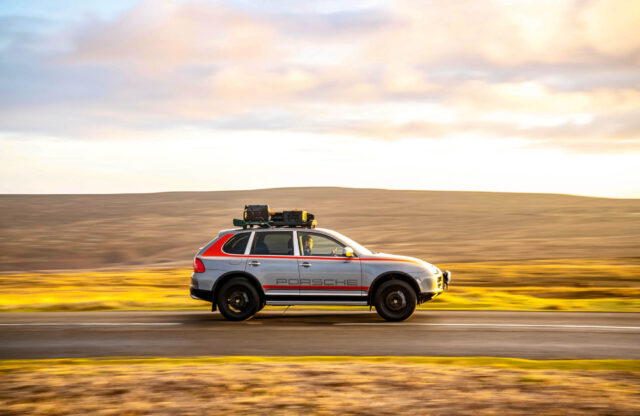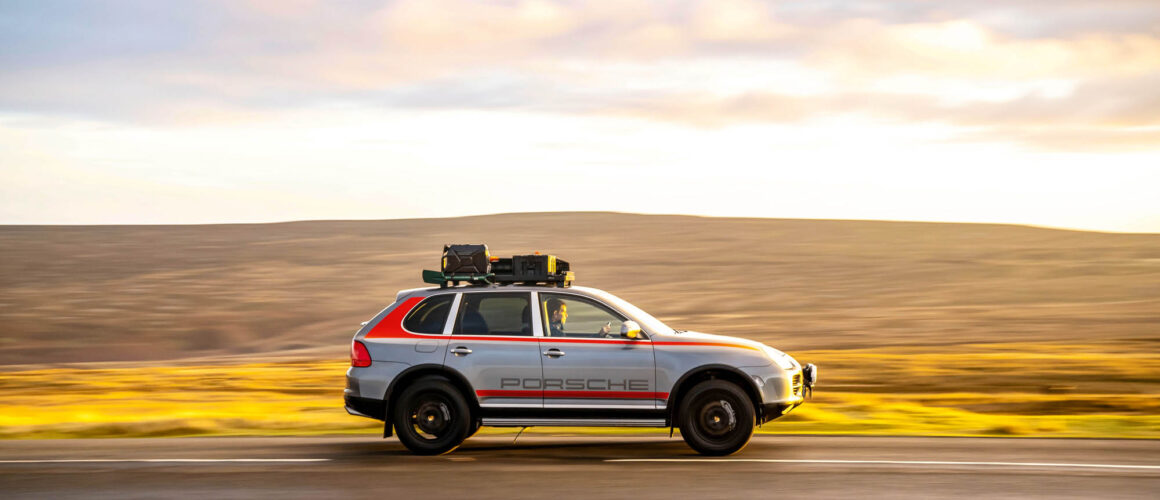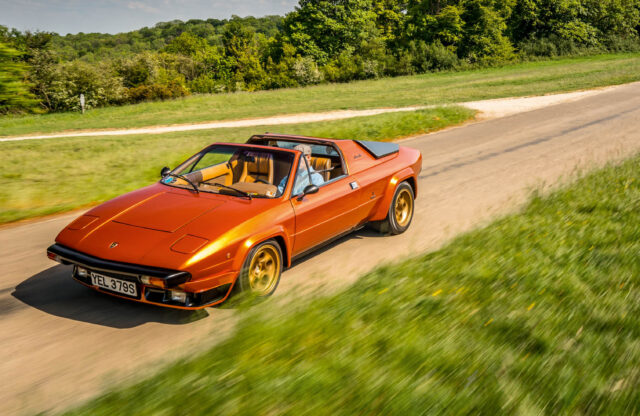It’s 20 years since Porsche launched its first SUV, the Cayenne – to the dismay of purists. Time suggests that any controversy was unfounded
Conflicted. That describes my feelings. Even as the owner of a Boxster and the former owner of a 944. ‘Not proper Porsches,’ some say. Of course, that’s really not true. I’m a 911 fan, through and through, but I don’t operate in that market. The Next Best Thing is still brilliant. But an SUV? Different ballgame altogether, surely.
Yet here I am, barrelling along the spectacular B6278 in the North Pennines, heading towards a destination not so far from Hadrian’s Wall in the grand scheme of things. Celebrating 20 years of the Porsche Cayenne, at the wheel of a 2005 Cayenne S. It’s the very back end of November, there’s frost on the verges even in the afternoon (it never actually melts), and we’ve climbed above the thick blanket of freezing fog. Looking down onto the silent, swirling menace feels eerie, like standing over a glacier. And there are snow poles marking the edges of the ribbons of broken tarmac that weave across these majestic moorlands. Won’t be long before those hazard delineators become crucial, marking the murky fringes where road becomes sheep fodder, alerting motorists to danger. Sudden-drop danger.
Even now I’m grateful for the security of four-wheel drive and a high driving position. I’ve driven in these parts before in Porsches, most recently a 911 GTS and the mind-bogglingly entertaining Cayman GT4 RS. No frost back then, so enough grip for fun without that tingle in the scalp that comes when you’re only just getting away with it. Not so sure I would today.
I’m held in place by a properly supportive leather seat; the wheel is a three-spoker, slim-rimmed, also wrapped in leather, broader than a 911’s but it feels right in the hands, nicely vertical in that Porsche way. Up-front is a V8 – four-cam, 32-valve, quite a revver – offering max thrust of 335bhp but also an extremely solid 310lb ft, which begins at a luggable 2500rpm and is sustained right up to 5500rpm. It’ll do 150mph and 0-60mph in 6.9sec. There’s a six-speed Tiptronic auto, and it drives all four wheels.
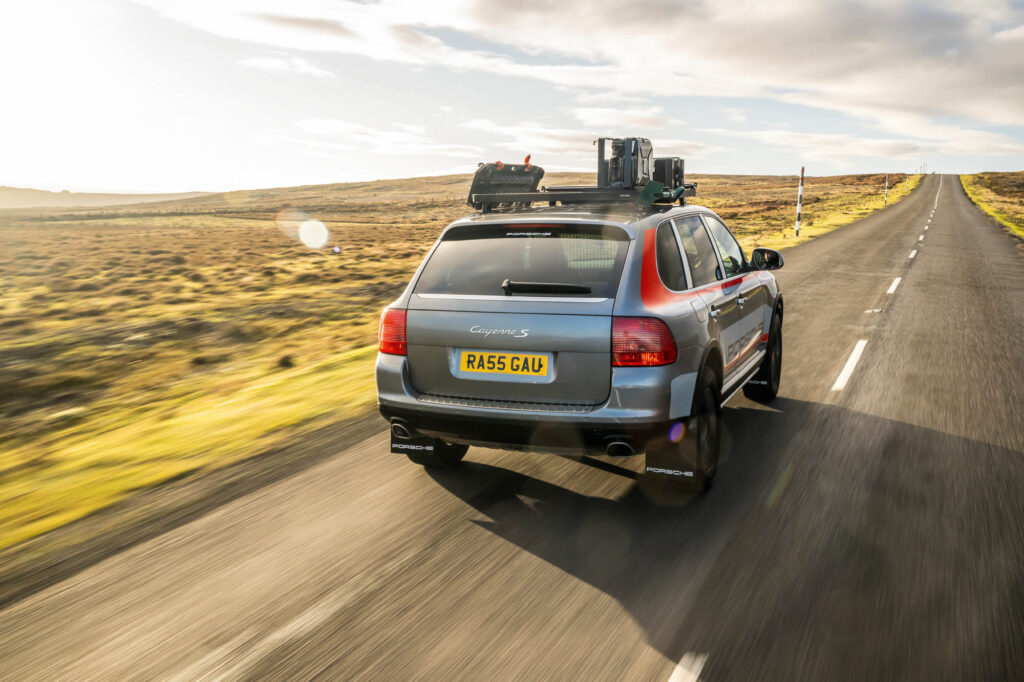
And yes, I’m having fun. Big grins. Laughing out loud. The Cayenne weighs more than two tonnes yet it feels decently tied down. There’s a bit of body movement, fair enough, plus a little roll, but they’re both of that friendly type that feeds your inner ear with information, allowing you to feel at one with the car, and you can quell some of the swell by selecting the ‘Sport’ setting for the electronically adjustable dampers. Sure, steering response is slightly soft if you compare it to a 911’s, but it’s certainly a match for sports saloons of that era, high-geared enough for tautness, weighty in a way that complements the car’s gait, and with sufficient feedback to keep the driver honest while chasing something considerably faster and more powerful. The Cayenne S is no slouch, growling aplenty and punching hard through the gears, but up ahead is a Cayenne 20 years’ this example’s junior, the latest Turbo GT – and it’s packing 631bhp.
Time for a bit of back-story. Ferry Porsche himself was clearly on prescient form in 1989: ‘If we build an off-road model according to our standards of quality, and it has a Porsche crest on the front, people will buy it.’ It was not a great era for Porsche, which had blown a tonne of development cash on the still-born 989 limo and was struggling on with the air-cooled 911 plus the transaxle 944 and 928, which were also knocking on a bit. By the change of the decade, its annual sales were little more than 20,000 globally. Porsche was in the red.
Then came the water-cooled revolution, controversial enough in itself, but by developing a brand new platform and sharing it across two model ranges – the 996 and the mid-engined Boxster – the company started dragging itself out of the slump. Only gradually. Something else was needed to boost profits, and pay for all those GT3s and RSs we have come to know and love.
North America was Porsche’s largest audience, and CEO Wendelin Wiedeking had an eye on the emerging Asian market as well. Four-wheel-drive wagons were all the rage there, Jeep’s Cherokee and Ford’s Explorer sharing US popularity, Toyota and Mitsubishi cleaning up elsewhere. While the Range Rover had defined its own luxurious end of the market two decades before, Porsche had something in mind that would appeal more to its sporting drivers, yet also give rival off-roaders a run for their money. It’s worth noting at this point that Porsche’s largest single market is now China, and it’s not thanks to 911s and Cayman GT4s.
Of course, SUVs exploded across Europe, led by the Germans: Mercedes launched its ML in 1997, BMW the X5 in 1999, and then came a proliferation of inter-related models across the VW group. But the Cayenne isn’t just a rebodied VW Touareg. There was more separation between the two marques then than now, and the Cayenne was developed as part of a joint venture, known as Project Colorado and announced in June 1998.
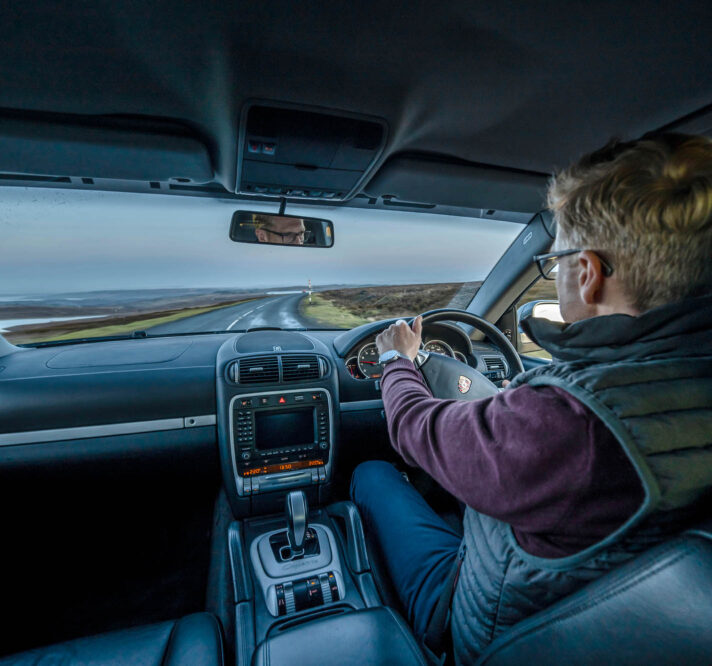
Yomping and swamping, we erupt through water splashes, letting the Cayenne dictate travel
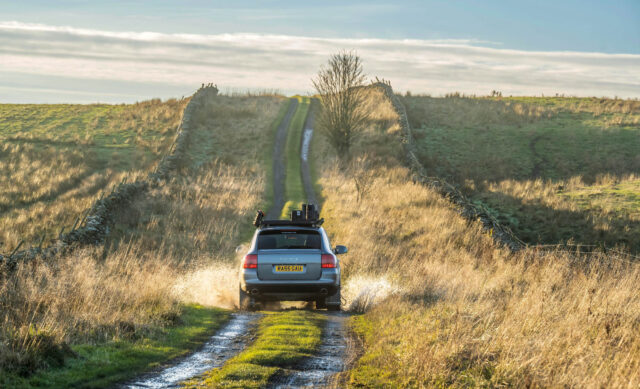
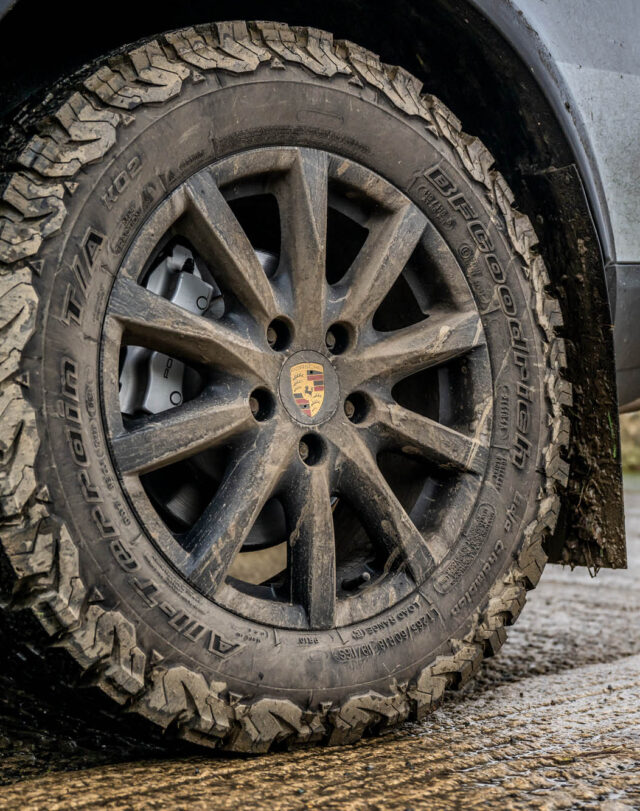
The Porsche Cayenne and Volkswagen Touareg would share the same platform, but the engineering development was led by Porsche (geeky fact: you can tell by the Porsche wheel bolt pattern). When the Cayenne was launched at the Paris motor show in September 2002, it was the company’s first V8 since the 928 (discontinued in 1995), its first four-door, and its first off-roader since the ’50s – though those were tractors, of course.
Wiedeking got his wish and Ferry Porsche’s prediction came true: the Cayenne immediately exceeded sales expectations. Early hopes were for 25,000 per year, but the result was more like 35,000, and 276,652 of the first generation were sold during its eight-year career, during which the initial naturally aspirated V8 was joined by a more powerful GTS version, a turbodiesel V6 and the range-topping Turbo and Turbo S. We’ve been on the third generation since 2017, and the millionth Cayenne rolled off the production line in 2020. Family-size Porsches had become a thing: the Cayenne opened the door to its junior SUV counterpart Macan, the Panamera saloon and more recently the electric Taycan. Not only that but the current platform now underpins the Porsche and VW and also Audi’s Q7 and Q8, Bentley’s Bentayga and Lamborghini’s Urus.
The Cayenne’s four-wheel-drive system was dubbed ‘Porsche Traction Management’, which split power 38:62 front:rear but could send up to 100% of torque to a single axle when required. It was coupled with ‘Porsche Active Suspension Management’, now a mainstay of every Porsche model, which continually regulates the damping, and works in combination here with air suspension. Unlike other four-wheel-drive Porsches of the era, high-speed grip wasn’t the only issue: this one would offer the potential to go where the tarmac ends. With ground clearance that could be raised to 273mm (from 217mm), a low-range transfer box and locking centre differential, this Porsche presented Land Rover-like capabilities.
And then comes the opportunity to find out. A few miles east of the picturesque village of Romaldkirk, the tarmac indeed ends and suddenly we’re green-laning. To be on the safe side I’ve raised the ride height, and as you can see, this particular Cayenne is optimised a little for such treatment, of which more shortly. Thing is, any Cayenne could tackle this route, with air-conditioning to your face while your behind is coddled by heated leather. No hair shirts, no diffs locked, dampers set to ‘Normal’.
At first we simply follow a pair of tracks and hear long grass tickling the Cayenne’s underbelly. I don’t need to take things quite so gingerly, it seems, so confidence builds and so does speed, the steering wheel kicking back gently over ruts and the suspension absorbing bigger movements than the tarmac ever gave rise to.
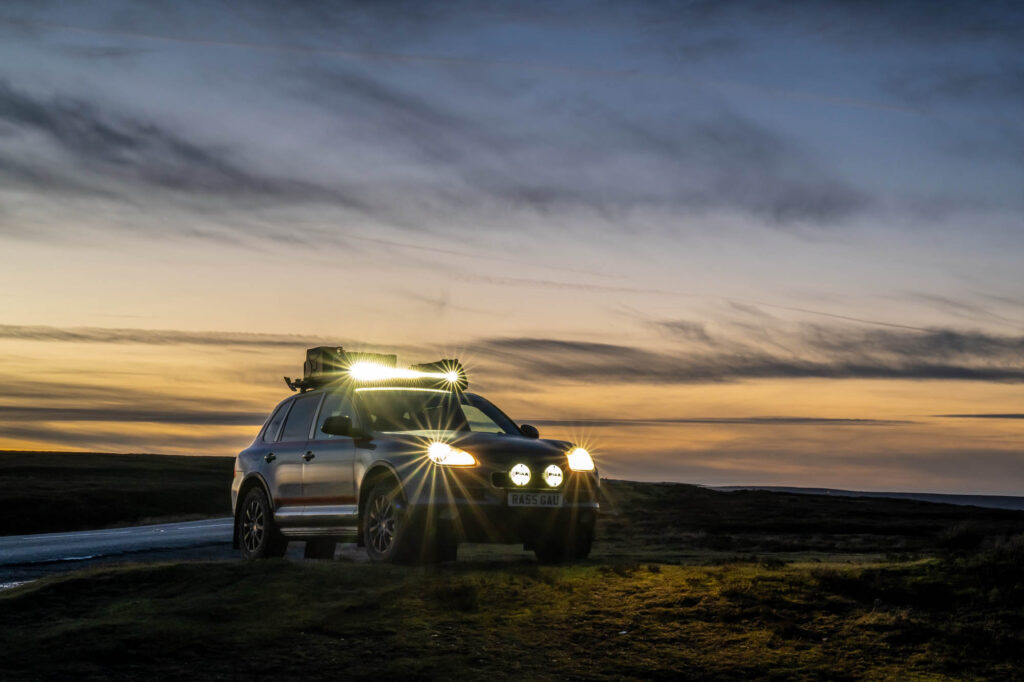
And then things get a little more challenging: it looks like tractors have sunk here, the grass strip down the middle has deviated to one side, and the route becomes less obvious. Forward direction is now indicated by the dry stone walls on either side rather than an apparent pathway; they’re about 40ft apart and quite how we negotiate our way is down to us.
Yomping and swamping, we erupt through some water splashes, modulating the throttle while keeping a lighter grip on the wheel, letting the Cayenne dictate travel to an extent. It finds its way, traversing with barely a grumble even over sections that have front and rear axles twisting in opposite directions.
All in a day’s work for a car like this. In 2006, two private rally teams each entered a Porsche Cayenne S in the Transsyberia Rally from Moscow to Ulaanbaatar in Mongolia – and took first and second place. There followed a limited run of 26 Cayenne S Transsyberia customer cars, and in 2007 the Cayenne scored a one- two-three finish in the Transsyberia, and a total of seven finished in the top ten. A year later, 19 started the Siberia Rally and took all but sixth place in the top ten.
Those Transsyberia editions were fitted with all-terrain tyres, a safety cage, a shorter axle ratio, reinforced front wishbones and underbody guards. The car you see here is a mechanically standard 2005 Cayenne S but was used from new as a technical training vehicle by Porsche Cars GB before being acquired by the UK’s Porsche Classic division. The ‘overland’ treatment tells absolutely no lies: it’s now fitted with genuine Porsche rock rails and wheels, and it’s running off-road tyres.
Few family-size cars offer such capability at this price. Serviceable early Cayenne V8s are yours from around £5000; even a 450bhp Turbo is comfortably under ten grand. And Porsche Classic offers full parts back-up.
So, we’ve had fun on road and off. Turn around in that comfortable yet supportive driving seat and we notice plentiful space for a trio of rear-bench passengers. There’s a sizable boot, too. Yes, yes, yes, those practical elements are all staples of this kind of big, estate-shaped four- wheel-drive car. But the fun bit isn’t, not always, and it certainly wasn’t two decades ago. That comes from putting the ‘S’ into SUV. I mean, it’s a Porsche so you might imagine you could nail it round a track, too. Well, almost. And why not? In fact, evo magazine actually did, back when the Cayenne was new. Not only did it match the BMW M3’s Bedford Autodrome lap time, but it did so in a suitably sideways fashion.
2005 Porsche Cayenne S specifications
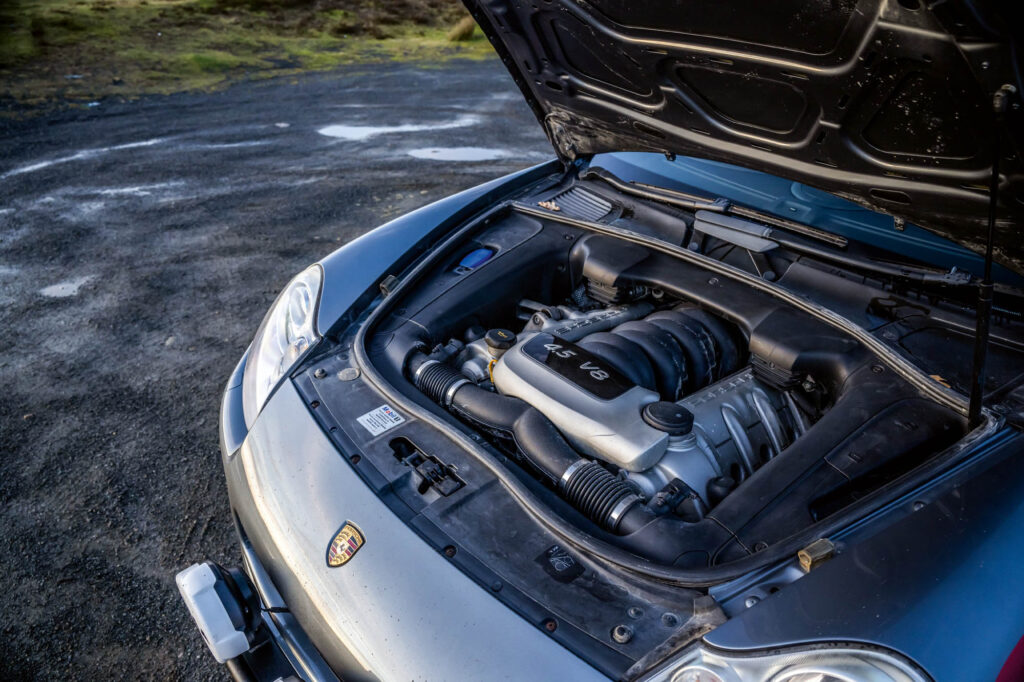
| Engine | 4511cc V8, DOHC per bank, 32-valve, variable cam timing, electronic fuel injection and engine management |
| Power | 335 bhp @ 6000 rpm |
| Torque | 310 lb ft @ 2500-5500 rpm |
| Transmission | Six-speed ‘Tiptronic S’ automatic, four-wheel drive |
| Steering | Rack and pinion, power-assisted |
| Suspension | Double wishbones (front), multi-link (rear), height-adjustable air spring/damper units with electronically controlled damping |
| Brakes | Vented discs |
| Weight | 2245 kg |
| Top Speed | 150 mph |
| 0-62 mph | 6.9 sec |
